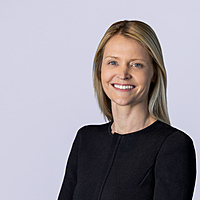The search for new central bank leadership
Globally, questions are being raised about the independence of central banks. In the United States, President Trump is reportedly eager to name the next Federal Reserve Chair early – replacing current Chair Jerome Powell with someone more dovish. At present, there is no shortage of potential candidates willing to prove their dovish credentials. Across the Pacific, New Zealand is also on the lookout for new central bank leadership following the resignation of former Governor Adrian Orr. There, the focus is less on shifting policy direction and more on appointing a well-credentialed successor. Nonetheless, there is a preference for the next Governor of the Reserve Bank of New Zealand (RBNZ) to work closely with government officials and potentially bring a refreshed culture to the institution.
The macroeconomic environments in the U.S. and New Zealand could not be more different. In the U.S., inflation risks are being driven by tariff and fiscal policies, and leading indicators suggest less downside to economic activity from policy uncertainty than previously anticipated. These dynamics support the case for the Federal Reserve to keep interest rates on hold for longer. In contrast, almost every major economic indicator in New Zealand suggests the need to accelerate rate cuts – yet uncertainty around RBNZ leadership may be a contributing factor to the recent lack of decisive action.
The experiences of the U.S. and New Zealand offer fascinating insight into how the issue of central bank independence may evolve globally. Interestingly, in the U.S., bond market participants appear to be looking past Powell’s “hold” rhetoric, focusing instead on the dovish stance of the next likely Fed Chair. U.S. financial conditions are beginning to ease more than Powell’s messaging suggests is appropriate. Meanwhile, in New Zealand, it appears bond markets are underpricing the need for further easing, potentially limiting the extent to which borrowers will benefit as fixed-rate mortgages roll over. Financial conditions there are simply not easing enough.
Ultimately, credibility is what matters. From an investor’s perspective, a central bank leader needs to be credible – not merely hawkish or dovish. Anything less creates the risk of a market backlash and unintended consequences. In the U.S., Chair Powell’s current policy stance is credible. Likewise, in New Zealand, there is credible rationale for cutting rates more aggressively.
Should the next Fed Chair adopt a strong dovish bias, they will also need a strategy for managing long-term bond yields and the U.S. dollar. Recent experience has shown that aggressive rate cuts can steepen the yield curve and increase long-term yields. If U.S. inflation outpaces that of other major economies, and U.S. real yields fall below international peers, the U.S. dollar could weaken, contributing to inflation via higher import and commodity prices. History and theory both suggest it is difficult to simultaneously control short-term rates, long-term yields and the currency. This remains true even with unconventional monetary policy. It is also worth remembering that the next Fed Chair’s term will extend beyond President Trump’s, due to constitutional limits on presidential tenure. Therefore, the incoming Fed Chair must take a long-term view, which may not align with the current administration’s short-term preferences. In fact, Chair Powell himself was appointed by Trump, yet was compelled to raise rates after the pandemic to preserve credibility – not popularity. Central bankers can, and do, change their stripes when market conditions demand it.
With all this in mind, investors should be wary of placing too much weight on speculation around central bank appointments. It is far more important to maintain a disciplined and agile investment approach that focuses on current realities rather than unknowns. Sound stock selection will be key to delivering outperformance – rather than simply chasing crowded trades. By selectively owning companies with pricing power and exposure to multi-year thematic tailwinds, we are well positioned for a range of outcomes for economic growth and inflation.
5 topics
1 stock mentioned

